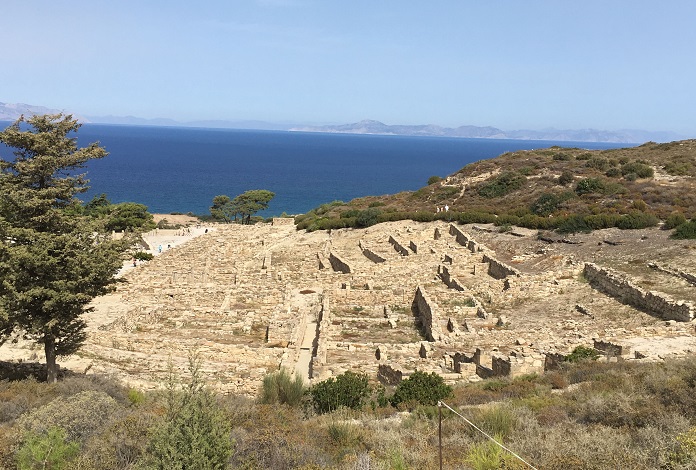
Join Thor and me as we wander the labyrinthine lanes of this beautifully preserved Hellenistic city on the island of Rhodes.
NOTE: Since our recent trip to Greece to research more settings for my novel-in-progress, THE ARIADNE DISCONNECT, Thor and I knew we had to return to this magical region. My first entry in this new blog series posted here on Saturday, 10/20/2018. It gives an overview of our rambles from Athens to seven islands in the Dodecanese and Cyclades groups, ending our ferry-hopping pilgrimage on the anciently sacred island of Delos.
Last week’s blog #14 introduced this lovely site with impressions from the writer Lawrence Durrell of his visit in the 1940s. Thor and I followed in his footsteps to admire the elegant design of this ancient city first established by the Dorian Greeks in the early first millennium B.C. Three city-states controlled the island and its shipping: Ialysos, Kameiros, and Lindos (see blog #10, January 11, 2019, for photos and our visit to Lindos). Around 400 B.C., the three entities joined in a single state and built a new capital on the site of present-day Rhodes Town. Kameiros continued as a thriving community, rebuilt by the Hellenes after an earthquake in 227 B.C. That rebuilt city, nestled into the natural contours of valley and hills overlooking the blue Aegean Sea, is what we see today in the excavated walls of houses, temples, and other buildings.
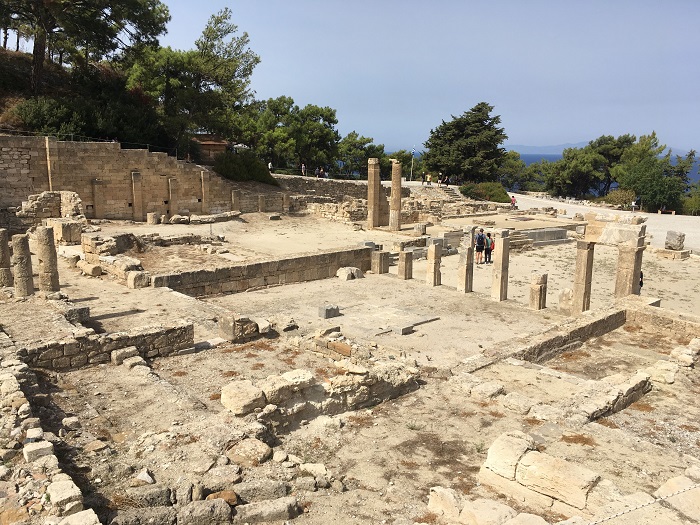
We had a lovely sunny day to explore the mazelike town, with just enough breeze to keep us comfortable as we wandered. In the central agora (gathering place) are the columns of a Doric temple, probably dedicated to Apollo.
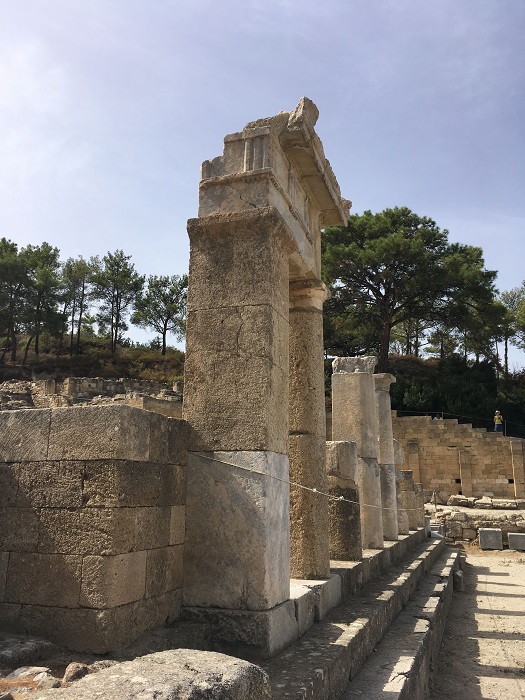
Closer to the overlook is a sanctuary dedicated to all the gods, including Helios, the special deity of Rhodes.
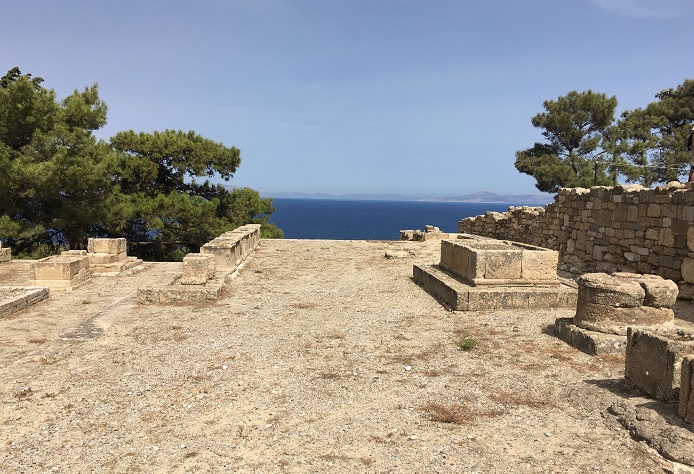
What Thor and I really appreciated was the opportunity to walk around the passages between the footings of residences next to the agora, and get some sense of the way the people lived in such close proximity to each other.

The maze of houses has an almost hivelike feeling, with shared walls. These are the walls of Hellenistic dwellings:
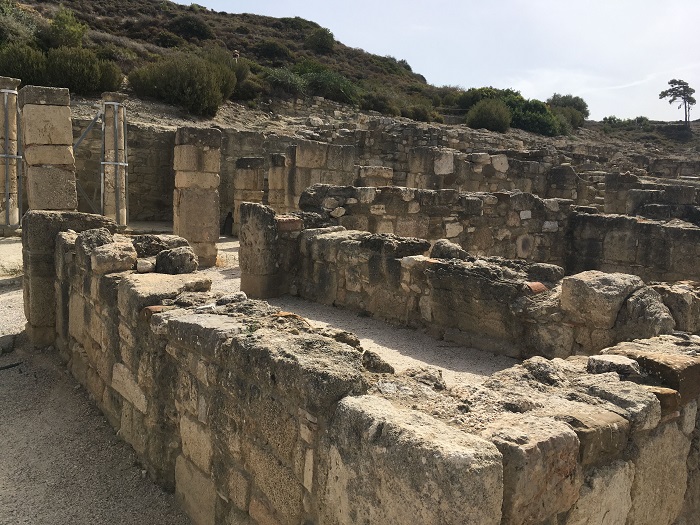
Next to them was a fountain plaza, with water supplied by a huge cistern higher on the hill.
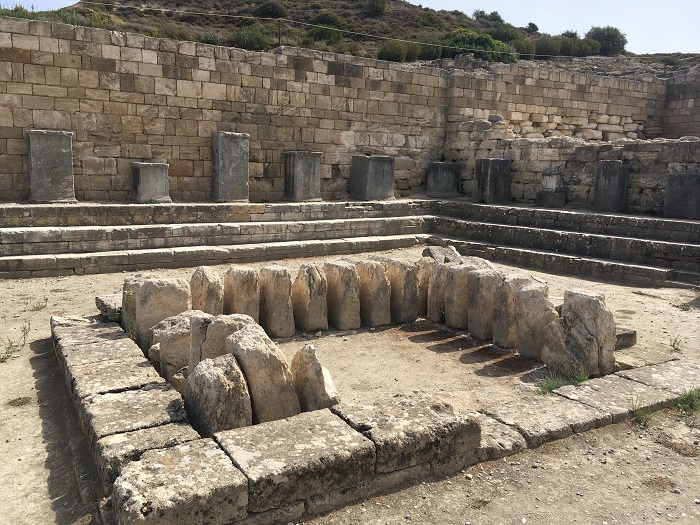
This stairway led into what was apparently one of the smaller cisterns. Waterproof plaster used to line the cisterns has been determined to be as durable as modern cement.
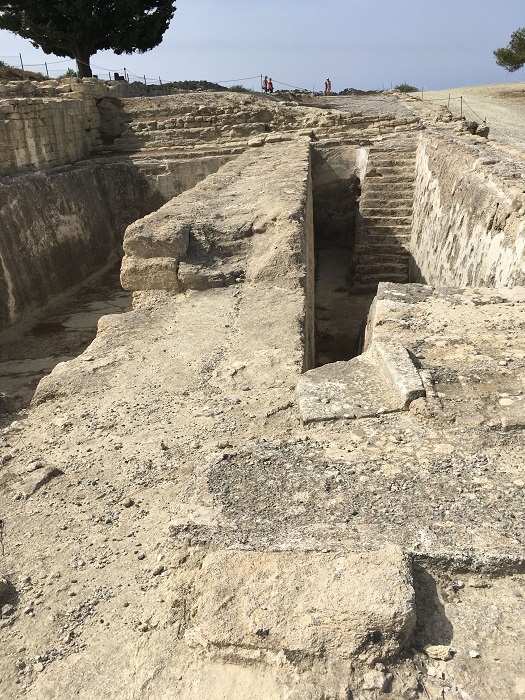
Many marble columns and plaques have carved inscriptions:
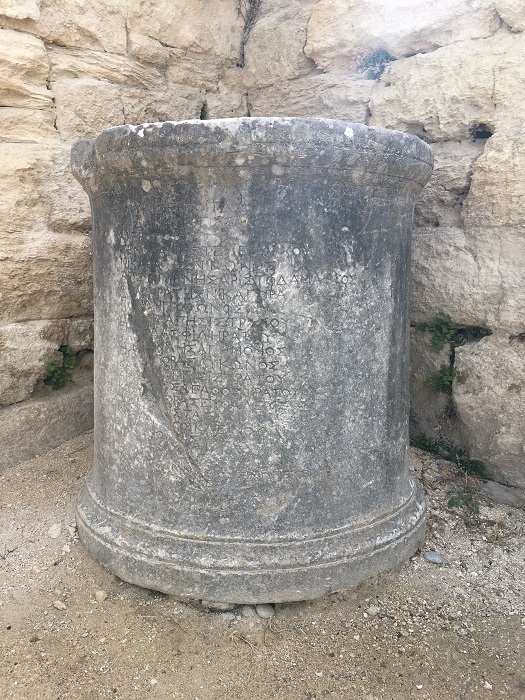
The Romans later occupied the city and built bath-houses near the overlook to the sea.
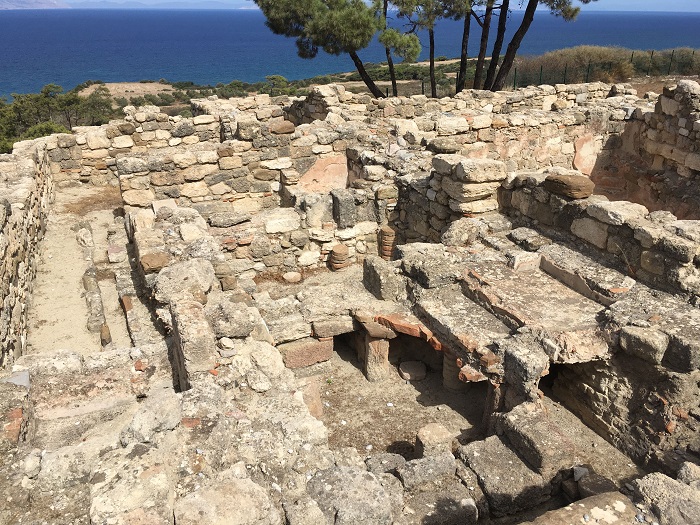
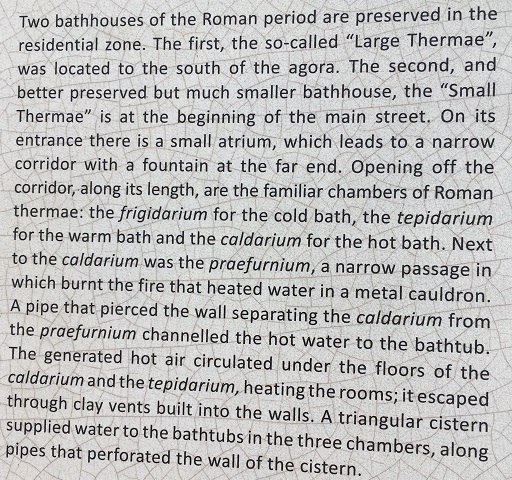
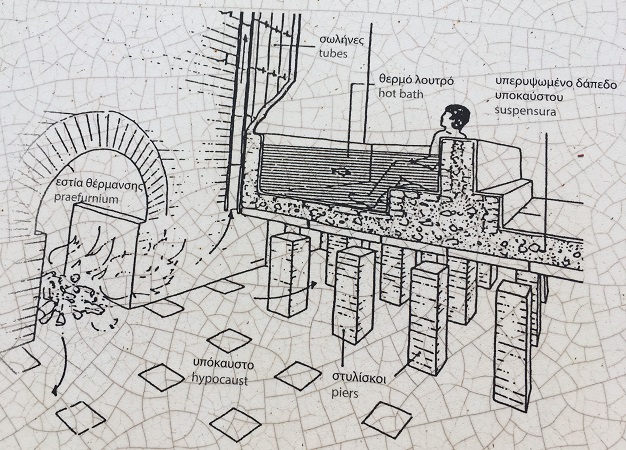
A climb uphill brought us to the ancient acropolis overlooking the city, where a sanctuary to Athena was established in the 9th century B.C.

The early temple was destroyed in the 227 B.C. earthquake, after which an elaborate Hellenistic complex and temple were built.
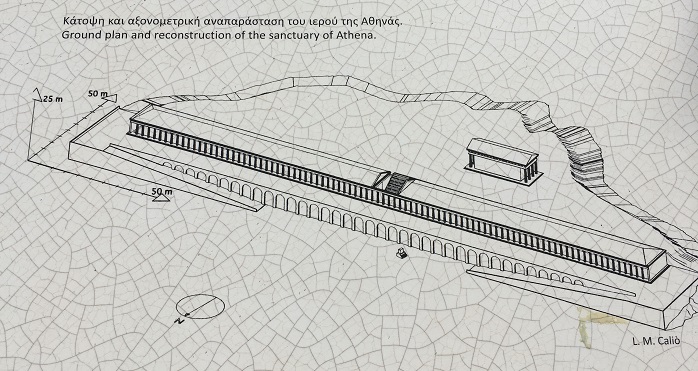
That sacred precinct enjoyed an impressive view over the city and sea:
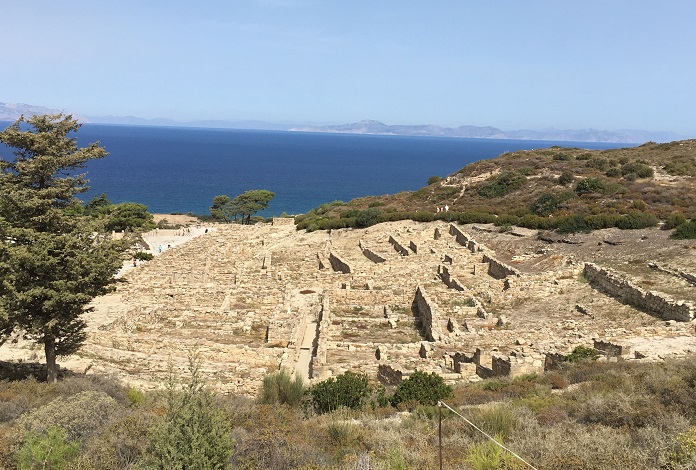
After enjoying the breeze and views from the site of Athena’s temple, Thor and I reluctantly shook off the spell of history and headed toward the harbor where we would board a ferry for our next island: Kos and the healing center of Aesculapios! Join us next Saturday for more explorations.

*****
You will find The Rambling Writer’s blog posts here every Saturday. Sara’s latest novel from Book View Cafe is available in print and ebook: The Ariadne Connection. It’s a near-future thriller set in the Greek islands. “Technology triggers a deadly new plague. Can a healer find the cure?” The novel has received the Chanticleer Global Thriller Grand Prize and the Cygnus Award for Speculative Fiction. Sara has recently returned from another research trip in Greece and is back at work on the sequel, The Ariadne Disconnect. Sign up for her quarterly email newsletter at www.sarastamey.com

1 thought on “The Rambling Writer Explores More Greek Islands, Part 15: The Labyrinth of Ancient Kameiros”